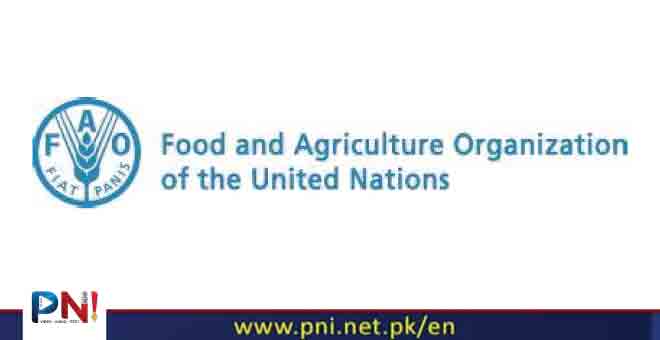UNITED NATIONS, Apr 08 (APP): Global food prices in March recorded their first monthly increase in seven months, driven by higher costs of vegetable oils and dairy products, the Food and Agriculture Organization (FAO), a Rome-based UN agency, has said.
The prices, however, posted a year-on-year decline during the month, according to the UN agency.
The February reading was the lowest for the index since February 2021 and marked a seventh consecutive monthly decline.
International food prices have fallen sharply from a record peak in March 2022 at the start of Russia’s invasion of fellow crop exporter Ukraine.
The FAO’s price index, which tracks the monthly change in the international prices of a basket of commodities, averaged 118.3 points last month, a 7.7 per cent decrease from the year-ago period.
However, it rose 1.1 per cent from February, marking its first increase since August, it said.
The main monthly index saw a significant boost primarily due to the surge in vegetable oil prices, which soared by 8 per cent to reach 130.6 points from February. This marks a one-year high for the index. The FAO attributed this increase to the rising quotations for palm, soy, sunflower, and rapeseed oils. Still, it was a nearly 1 per cent decline from a year earlier.
“International palm oil prices increased due to seasonally lower outputs in leading producing countries and firm domestic demand in South-East Asia. While those for soy oil recovered from multi-year lows, boosted by robust demand from the biofuel sector, particularly in Brazil and the US,” the agency said.
Vegetable oil quotations were also driven by higher crude oil prices.
Dairy prices, meanwhile, dropped 8.2 per cent annually to 124.2 points, but rose for the sixth straight month, driven by higher cheese and butter prices.
The increase reflected steady import demand from Asia, higher internal sales in Western Europe leading to the spring holidays and seasonally falling production in Oceania, according to the report.
“Notwithstanding softer Asian demand, international butter prices increased further in March, mainly due to solid seasonal demand and somewhat tighter European stocks,” it said.
Meat prices rose 1.7 per cent to 113 points in March, a second consecutive monthly increase but a 1.5 per cent decline from the same period a year ago.
International poultry prices rose, underpinned by “continued steady import demand from leading importing countries, despite ample supplies mostly sustained by reduced avian influenza outbreaks in major producing countries”, the FAO said.
The resistant nature of avian influenza viruses means they can be carried on farm equipment and spread easily from farm to farm, according to the World Organization for Animal Health.
Prices of bovine meat – those related to cows – maintained a steady uptick in March, mainly due to higher purchases by leading importing countries, while prices for ovine meat – related to sheep – dropped for a second straight month, on a surge in supplies exceeding seasonal levels, especially from Australia, the FAO said.
Cereal prices declined 2.6 per cent from February for a third consecutive drop and posted the biggest annual decline of 20 per cent, driven by sustained export competition among the EU, the Russian Federation and the US.
“Amid ample supplies, cancelled wheat purchases by China [from both Australia and the US] placed downward pressure on markets, while favorable crop prospects for the 2024 harvest in the Russian Federation and the US also contributed to the softer price tone,” the FAO said.
By contrast, maize inched up on a monthly basis, as higher buying interest, especially from China, amid logistical difficulties in Ukraine and elsewhere, supported the crop’s prices.
Residents in Gaza report a significant surge in food prices Sugar was the only commodity to post a year-on-year increase, rising 4.8 per cent to 133.1 in March, but sequentially down about 5.5 per cent after climbing for two months.
Last month’s decline was underpinned by the upward revision to the 2023-2024 sugar production forecast in India and the improved pace of harvest in Thailand.
Large exports from Brazil also weighed on world sugar prices. Brazilian crops, negatively affected by prolonged dry weather, “continued to exacerbate seasonal trends and limited the price decline”, the FAO said. Brazil, Thailand and India are the world’s biggest sugar producers.
In addition, higher international crude oil prices helped contain the decrease in sugar prices, the FAO said.
Follow the PNI Facebook page for the latest news and updates.








